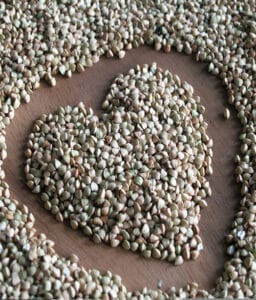How much muscle do we need?
Muscles are the source of our physical endurance, strength and vitality. Muscles play a crucial role not only in our performance in the gym but also in our daily lives, from healthy metabolism and health maintenance to well-being and mood.
In this article, we will look at why we should pay attention to our muscle mass and look for the answer to the questions – How much muscle mass do I need? How can I assess it? How can we increase it and how to maintain it?
What is muscle mass?
Our bodies are made up of organs (including muscles), bones, fat and water.
To estimate body composition, we usually divide:
- Lean body mass (sometimes also called lean muscle mass) is the total weight of all body tissues (bones, muscles, organs, skin, blood…) – everything except the weight of fat tissue. Cell membranes are also included in lean body mass (up to 3% of body mass in men and 5% in women). In some sources, lean body mass does not include bone weight.
- Fat mass – the total weight of fat in our body (excluding the weight of fat cell membranes).
- Bone mass – the total weight of bones.
- Muscle mass – the total weight of all muscles, including:
- Smooth muscle, which is located in the walls of internal organs and blood vessels and is responsible for various autonomic functions such as moving bowel contents, regulating blood flow, etc.
- Cardiac musculature.
- Skeletal muscles – muscles that are attached to the bones, maintain posture and allow us to move consciously – walk, move objects, etc. Skeletal muscles, in turn, are divided into:
- Shallow or superficial muscles.
- Core or deep muscles.
In most contexts, the term: “muscle mass” refers to skeletal muscle. It is the only type of muscle we can control.
Maintaining optimal muscle mass is essential for both our overall health and well-being because:
- Muscles play a key role in metabolic processes, including energy/calorie expenditure.
- Skeletal muscles provide stability to our body and are responsible for our movement, posture and balance.
- Adequate muscle mass can reduce the risk of some chronic diseases.
Maintaining muscle mass is particularly important in the second half of life because then our physical activity decreases, which not only reduces strength and endurance but also causes problems such as:
- Increased risk of falls and fractures.
- Metabolic disorders, which can lead to weight gain, for example.
- Insulin resistance and increased risk of type 2 diabetes.
- Bone fragility, which increases the risk of osteoporosis and fractures.
- Nutritional deficiencies (due to inadequate and/or unbalanced diet).
- Increased fatigue.
- Slower recovery after illness or surgery.
In other words, the less we move, the worse we feel, and the worse we feel, the even less we move …
And.
More and more health problems appear.
How do I estimate my lean body mass and muscle mass?
The ratio of lean body mass, muscle mass and fat mass is used to assess overall health and track changes in body composition:
- The lean body mass to fat mass ratio reflects the balance between fat-free tissue (lean body mass) and body fat mass. It is commonly used as an indicator of overall body composition in health and fitness assessment.
- The muscle-to-fat mass ratio reflects the ratio of muscle (metabolically active tissue) to adipose tissue (energy storage tissue). It is used to track changes in body composition during weight loss or fitness programmes to assess metabolic health and physical performance.
A higher proportion of muscle is indicative of better metabolism, physical strength and general health.
On the other hand.
A higher proportion of fat indicates poorer fitness, metabolic health problems and a higher risk of chronic diseases.
To estimate lean body mass (LBM) in adults, the Boer and Hume formulae are commonly used in clinical settings, which determine lean body mass based on a person’s height, weight and sex:
- Boer formula:
- For men- LBM (kg) = (0.407 × weight in kg) + (0.267 × height in cm) – 19.2
- For women – LBM (kg) = (0.252 × weight in kg) + (0.473 × height in cm) – 48.3
- Hume formula:
- For men – LBM (kg) = (0.32810 × weight in kg) + (0.33929 × height in cm) – 29.5336
- For women – LBM (kg) = (0,29569 × weight in kg) + (0,41813 × height in cm) – 43,2933
When using these formulas, it is important to remember that they are approximate and may not be completely accurate for all people, especially those with atypical physiques.
Accurately determining muscle mass is much more complicated because of additional factors such as ethnicity and fitness level.
Therefore, there is no simple method/formula for accurate assessment of muscle mass at home (there are various formulas, apps, smart scales, etc., but their accuracy is highly questionable).
How to accurately determine your body composition read HERE.
How much muscle do we need?
The answer to this question depends on your individual goals, for example – do you want to improve your health, increase your physical performance, or win a fitness or bodybuilding competition…
Lean body mass (including bone mass) is usually between 60 and 90 per cent of body weight. Lean body mass is considered unhealthy if it is less than 68 per cent in women and 75 per cent in men.
Attention! Lean body mass here is expressed as a percentage of total body mass, while the Boer and Hume formulae calculate lean body mass in kilograms.
To convert kilograms into percentages, use this equation: LBM (%) = LBM (kg) / (your body mass / 100)
For example, my body mass is 65.7 kg, but my lean body mass according to the Boer formula is 54.3 kg. To calculate the percentage of lean body mass I have to divide 65.7 by 100 which is 0.657, and then divide 54.3 by 0.657 which is 82.648 percent.
Since the lean body mass in this context means everything except fat – I can also quickly calculate approximately how much fat percentage is in my body: 100 – 82.648 = 17.352 per cent. In other words, the ratio of lean body mass to fat in my body is about 82.6% : 17.4%.
Ideal body fat percentage for women:
Age | Dangerously high | Good | Ideal | Dangerously low |
20–29 | Above 27.2% | 16.6–19.4% | 14–16.5% | Below 14% |
30–39 | Above 29.2% | 17.5–20.8% | 14–17.4% | Below 14% |
40–49 | Above 31.3% | 19.9–23.8% | 14–19.8% | Below 14% |
50–59 | Above 34.6% | 22.6–27% | 14–22.5% | Below 14% |
60-69 | Above 35.5% | 23.3–27.9% | 14–23.2% | Below 14% |
Source: PennRec
Ideal body fat percentage for men:
Age | Dangerously high | Good | Ideal | Dangerously low |
20–29 | Above 23.2% | 10.6–14.8% | 8–10.5% | Below 8% |
30–39 | Above 25% | 14.6–18.2% | 8–14.5% | Below 8% |
40–49 | Above 26.7% | 17.5–20.6% | 8–17.4% | Below 8% |
50–59 | Above 27.9% | 19.2–22.1% | 8–19.1% | Below 8% |
60-69 | Above 28.5% | 19.8–22.6% | 8–19.7% | Below 8% |
Source: PennRec
For athletes, lean body mass (body mass – fat mass) typically ranges from 81 to 91 per cent for women and between 84 and 94 per cent for men.
But.
There are no specific guidelines on how much total muscle mass or skeletal muscle mass should be.
A good way to know whether your muscle mass is healthy or not – is to compare your figures with the average.
Unfortunately, there is very little reliable data on the average percentage of skeletal muscle mass. The only source with reliable information is a study published in 2000, during which the muscle mass percentage was determined in 468 men and women.
Average skeletal muscle mass percentages in men
Age | Muscle mass percentage |
18–35 | 40–44 |
36–55 | 36–40 |
56–75 | 32–35 |
76–85 | < 31 |
Average skeletal muscle mass percentages in women
Age | Muscle mass percentage |
18–35 | 31–33 |
36–55 | 29–31 |
56–75 | 27–30 |
76–85 | < 26 |
What happens to us if our muscle mass is significantly higher than average?
Moderate gains in muscle mass, achieved through safe and balanced strength training and a balanced diet, are usually associated with positive health effects.
However, significantly increased muscle mass (especially when achieved through extreme and unhealthy methods) can be associated with health risks and unpleasant side effects:
- Excess muscle mass puts extra strain on joints, increasing the risk of joint injuries.
- Muscles require energy to maintain, so people with high muscle mass need to consume more calories, but with natural products, it can be difficult to regularly consume 3000 calories or more per day.
- Planning a balanced diet becomes more complicated as more protein is needed to maintain muscle growth.
- In some cases, extreme muscle growth and the associated metabolic stress can affect hormone balance and general health (this is mainly the case in bodybuilding).
- Although regular physical activity is beneficial for heart health, extreme muscle mass can have a negative impact on cardiovascular function.
- Studies show that excessive muscle mass reduces flexibility and the ability to jump or run in some people.
What happens to us if our muscle mass is significantly lower than average?
Some people argue that having a large fat mass and a small muscle mass gives a survival advantage because a large amount of fat can provide the body with energy for longer.
However, this advantage is very hypothetical 😊.
Low muscle mass has a negative impact on both overall health and well-being:
- Muscle mass is directly related to our strength. The less muscle mass we have, the weaker we are, and daily activities become more difficult.
- Loss of muscle mass can lead to mobility problems, making it more difficult to move around (walking, climbing stairs, etc.).
- Muscles play an important role in calorie burning. A reduction in muscle mass slows down metabolism, which in turn can lead to weight gain.
- Weaker muscles can contribute to balance problems, increasing the risk of falls and fractures, especially in older people.
- Muscles help maintain bone health. Muscle atrophy can lead to a decrease in bone density, increasing the risks of osteoporosis and fractures.
- Reduced muscle mass can contribute to metabolic disorders, including insulin resistance and impaired glucose control, which increase the risk of type 2 diabetes.
- Muscle tissue plays an important role in regulating hormones. Muscle loss can affect hormonal balance and lead to problems such as reduced testosterone levels in men (which in turn lead to reduced libido, erectile problems, increased hair loss, fatigue …).
- Adequate muscle mass is associated with a strong immune system. Muscle loss can weaken the body’s ability to defend itself against infection and disease.
- Chronic loss of muscle mass can have long-term health consequences, contributing to the development of chronic diseases.
How to increase muscle mass?
It is harder for women to increase muscle mass than men, but that doesn’t mean that women can’t.
A fit and toned body not only looks more attractive and boosts our self-confidence, it is also a guarantee of our physical health.
Strength training is the best way to increase muscle mass, but if you want to improve your overall functional fitness, balance and coordination, functional training is the best option.
However.
Muscle building doesn’t happen only in the gym but also when you walk to work, climb stairs, ride a bike… and in the kitchen.
That’s another important rule to remember – a balanced diet for muscle building is just as important as lifting weights and other exercises.
There are six important prerequisites for muscle growth:
- You need to consume more calories/energy than your body needs daily.
- Your diet must be balanced and contain the right amount of protein for your physical activity.
- During the workout, you should follow the principle of progressive overload.
- After workouts, you should give your body enough time to recover.
- You must drink enough water.
- Sleep quality and stress management are also important.
Read more on how to increase muscle mass HERE.
Key takeaways
Muscle mass is part of our lean body mass, and the more muscle we have, the lower our risk of injury, chronic disease and premature death.
Muscle mass also indicates physical function, including mobility and balance.
Calculating lean body mass is complicated; determining muscle mass is even more difficult. The most accurate methods are expensive, while the accuracy of household devices (smart scales, apps, etc.) is highly questionable.
Muscle mass varies from person to person and is determined by genetics, age, gender, level of physical activity and dietary habits.
Those who want to increase muscle mass should focus on resistance training and a balanced diet with a sufficient amount of protein.
Lean body mass: the development and validation of prediction equations in healthy adults
Protecting muscle mass and function in older adults during bed rest
Role of metabolic stress for enhancing muscle adaptations: Practical applications
Implications of low muscle mass across the continuum of care: a narrative review
Muscle mass, BMI, and mortality among adults in the United States: A population-based cohort study
The Underappreciated Role of Low Muscle Mass in the Management of Malnutrition
Muscle Mass Index As a Predictor of Longevity in Older Adults
Associations of Muscle Mass and Strength with All-Cause Mortality among US Older Adults
Androgenetic alopecia: An update
Lean Body Weight-Tailored Iodinated Contrast Injection in Obese Patient: Boer versus James Formula

Help to maintain this site, create interesting articles and delicious low-calorie recipes!
Share this article
Follow me on Facebook
I recommend reading these articles as well

Sexual health and nutrition
How does diet affect our libido and sexual health? How to boost your sexual desire and performance naturally?

Insulin and insulin resistance
What is insulin, and what does it do? What is insulin resistance? What are the symptoms of insulin resistance? What causes it, and how to deal with it?

Fats - why shouldn't they be off the menu?
Many of us, in an attempt to reduce excess weight, first give up products that contain fat. This is a very big mistake, because we need fat

Buckwheat and buckwheat diet
About buckwheat, buckwheat diets and its impact on our health, beauty and well-being.

